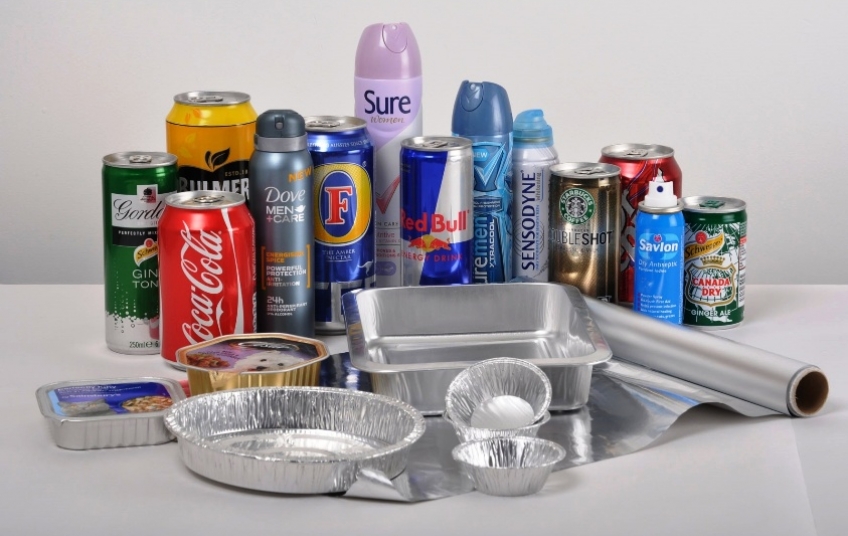Aluminum is a versatile packaging material that has the capability to be easily formed to any shape while still maintaining great protective qualities. This and the fact that aluminum can be fully recycled and reused an infinite number of times make it one of the most popular and versatile packaging materials in the world. Aluminum can be found just about everywhere, in our homes, cars, airplanes, cellphones, computers, and many types of packaging. This light and durable metal that, is the 13th element in the periodic table, is a very big part of our everyday lives. The benefits and uses of aluminum are growing all the time and play an important role in the packaging of many products.
There are many benefits of using aluminum in packaging. Aluminum has very good thermal conductivity. Aluminum transfers heat 2.4 times faster than iron. Its thermal conductivity is at the top of the range for metallic alloys which make it very ideal in applications where heating or chilling is needed, for example chilling a drink or cooking on a foil tray. Another positive quality of aluminum would be its diverse range of shiny finishes that make it ideal for creating great quality graphics. This gives products an impressive shelf presence by easily showing off a brands identity and logos. Aluminum is also lightweight which makes saving on resources and transportation costs a top quality of the material. If there is less material used, then there is going to be less waste at the end of its use. Not only is it lightweight but it is easily formed into desired shapes without losing its barrier qualities. Aluminums malleability is some of the best for a metallic alloy. The barrier qualities and protective abilities of this material is another benefit that make it a great material for packaging. It can be a complete barrier to light, gases, micro-organisms, and moisture which can significantly extend the shelf life of food, drink, medicines and many more. With sustainability growing at the rate that it is and being an important issue that most companies are concerning themselves with, recycling is a big part of choosing a material to package their products. Aluminum is the most recycled beverage container in the world. It requires up to 95% less energy to recycle aluminum than to produce it. This is huge when thinking about sustainability and preserving our resources for future generations. Sterile packaging is another market that aluminum is perfect for. The uses in hygienic and pharmaceutical aspects are growing at an all-time high. This is primarily due to aluminums high temperature annealing process. It provides a barrier against external factors such as heat, moisture, bacteria and odors. Blister, sachets, pouches, tubes, and anodized can packaging are just a few that are taking over these markets. Aluminum is being used in the packaging world more than ever and it is growing more popular due to its many great benefits and characteristics.
Aluminum is a very abundant material that provides many beneficial attributes, therefore it is popular and has many uses in packaging. It is used in many markets including cans, bottles, tubes, aerosols, caps, capsules, trays, foils, pouches, sachets and cartons. Two of the most popular being cans and foils. Aluminum cans are one of the most recycled types of containers in the world. They are a perfect way to contain and preserve our beverages and that is why they are so popular just about everywhere in the world. An aluminum can may be more expensive to produce than glass, but it is cheaper to transport and can be recycled and indefinite number of times. The use of aluminum cans began in 1954 and today 180 billion aluminum beverage cans are produced globally every year. Aluminum foil is another product most people use in their daily lives. The insulating properties make it ideal for packaging just about everything. This lightweight and thin material can provide quick and easy protection from light, liquid and bacteria. Aluminum foil is non-toxic and can be made in many desired thicknesses and sizes. These qualities make this material ideal for preserving our groceries and food. Most of our food is easily affected by sunlight and heat which can damage their appearance and taste. Foil is used to protect our food from this problem. Not only does aluminum foil protect our food from environmental conditions but it is also used to protect our pharmaceutical products from exposure to light and bacteria. A common product we use in this area is blister packaging. There are hundreds of uses for foil packaging that we use in our everyday lives that we do not even realize are there.
Aluminum is one of the most versatile, sustainable materials that is used in packaging today. Its qualities and abundance make it one of the best ways to preserve and protect our food and medicine. This is a resource that has a powerful impact on our daily lives. The uses of this metal are endless, and it looks as if aluminum is the superhero of all metals. It has properties that protect, prevent damage, and is wholly recyclable.
References
AG, interstruct. “Downloads (Adobe Reader Required).” Aluminium in Packaging – Home, packaging.world-aluminium.org/facts/a-permanent-resource/.
“Aluminium Applications – Packaging.” The History of Aluminium Industry, www.aluminiumleader.com/application/packaging/.
Staff, Metal. “Uses and Applications of Aluminum Metal.” Metalary, 12 July 2018, www.metalary.com/2017/04/25/uses-applications-aluminum-metal/.
“Uses of Aluminum.” ScienceStruck, ScienceStruck, 15 May 2018, sciencestruck.com/aluminum-uses-of-aluminum.


































